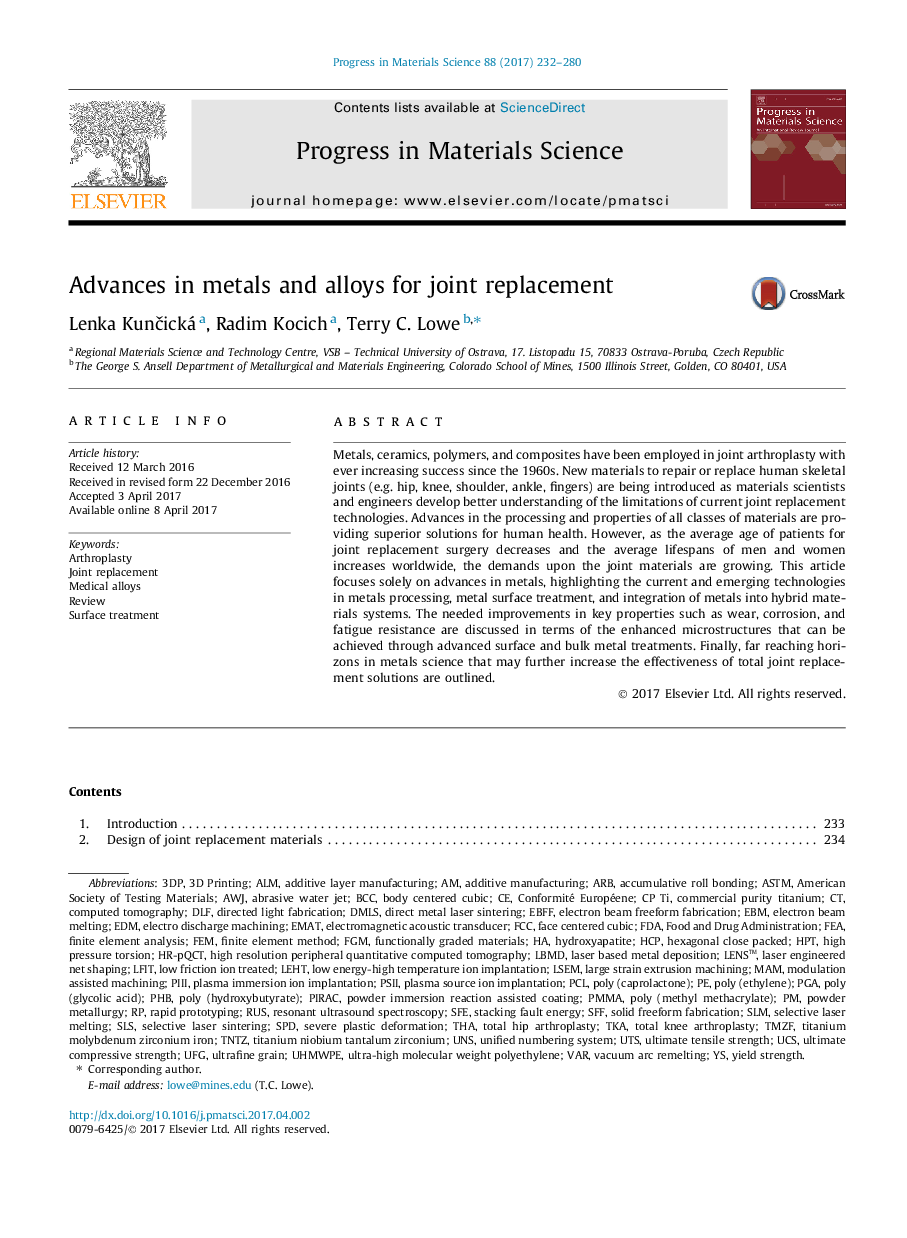| Article ID | Journal | Published Year | Pages | File Type |
|---|---|---|---|---|
| 5464323 | Progress in Materials Science | 2017 | 49 Pages |
Abstract
Metals, ceramics, polymers, and composites have been employed in joint arthroplasty with ever increasing success since the 1960s. New materials to repair or replace human skeletal joints (e.g. hip, knee, shoulder, ankle, fingers) are being introduced as materials scientists and engineers develop better understanding of the limitations of current joint replacement technologies. Advances in the processing and properties of all classes of materials are providing superior solutions for human health. However, as the average age of patients for joint replacement surgery decreases and the average lifespans of men and women increases worldwide, the demands upon the joint materials are growing. This article focuses solely on advances in metals, highlighting the current and emerging technologies in metals processing, metal surface treatment, and integration of metals into hybrid materials systems. The needed improvements in key properties such as wear, corrosion, and fatigue resistance are discussed in terms of the enhanced microstructures that can be achieved through advanced surface and bulk metal treatments. Finally, far reaching horizons in metals science that may further increase the effectiveness of total joint replacement solutions are outlined.
Keywords
MAMPIIIPHBDMLSSPDSLSSLMHCPSFFUHMWPEBCCPSIISFEhptARBDLFTKATHAHR-pQCTALMEBMLENS™RUS3DPUTSPIRACUltimate compressive strengthCP TiUCSPGAPCLEDMVacuum arc remeltingFEAElectron beam freeform fabricationUFGFGMFDAFCCAWJLBMDASTMTotal hip arthroplastyEMATArthroplastyTotal knee arthroplastyultimate tensile strengthAccumulative roll bondingUNSHigh Resolution peripheral Quantitative Computed TomographySevere plastic deformationAdditive manufacturingadditive layer manufacturingcomputed tomographycommercial purity titaniumJoint replacementAbrasive water jetStacking fault energyUltrafine grainSurface treatmentSelective laser meltingElectron beam meltingFinite element analysisFinite element methodSolid freeform fabricationFood and Drug AdministrationHexagonal close packedResonant ultrasound spectroscopyyield strengthLaser engineered net shapingDirect metal laser sinteringElectro discharge machiningElectromagnetic acoustic transducerpowder metallurgyRapid prototypingReviewFunctionally Graded Materialsbody centered cubicFace centered cubicHydroxyapatiteSelective Laser Sintering3D printingPMMAultra-high molecular weight polyethylenePoly (methyl methacrylate)FEMPlasma immersion ion implantationPlasma source ion implantationHigh pressure torsionVAR
Related Topics
Physical Sciences and Engineering
Materials Science
Nanotechnology
Authors
Lenka KunÄická, Radim Kocich, Terry C. Lowe,
